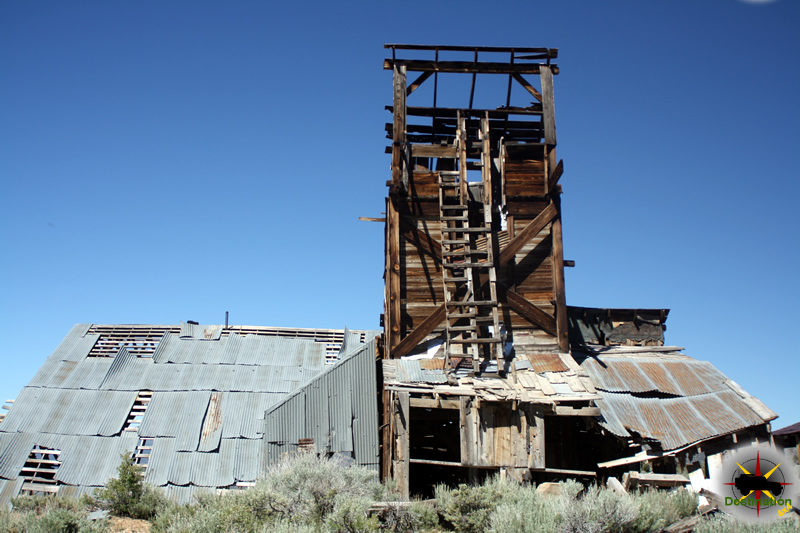Darwin is a unincorporated community, gold mining town and ghost town located in Inyo County, California about 22 miles from Keeler. The town was named for Darwin French, who lead a party of prospectors into Death Valley in 1860 looking for the mythical gunsight lode. This prospecting eventually lead to the wash, canyon and town named in his honor.

The site which became Darwin was formed in 1874 following a discovery of lead and silver. The overall grwoth of the town was limited by its water supply which is piped from over eight miles away. This discovery coincided with near by Panamint, although the rush to Darwin was more muted. Darwin has a population of about 700 at this time.
The Coso Mining News published weekly from 1875 – 1878 by T.S. Harris. The newspaper closed in September 1878 and the publisher moved up north to Bodie. The moved of the newspaper is symptomatic and followed by many others including miners seeker greener pastures. The town of Darwin had a remaining population of about 250 people. Despite the plunging population the town still supported six saloons, four stores, three restaurants and a drug store. Between the years of 1874 and 1877 newspapers reported at least 80 murders.
Darwin is a rarity and survived its original boom. The town remained viable until World Was I, when larger mining operations could profit of lower yielding ores. A post office opened in 1875 and closed in 1902. Eventually, the post office reopened and remains open today.

Darwin Today
In 2011, a documentary called Darwin is available on Amazon Prime. The documentary is described, “Propelled from society by tragic turns, the isolated community of Darwin, Death Valley (population 35) must now find ways to coexist in a place without a government, a church, jobs, or children.” I did watch the documentary and found it interesting. However, its focus was on the people living there now and not much on the history.
Recently, Brent Underwood, owner of Cerro Gordo featured Darwin on his youtube channel. He was scrounging old boards from buildings in Darwin to help rebuild Cerro Gordo. I am not sure how I feel about damaging one old town to rebuild another…
Darwin Town Summary
| Name | Darwin, California |
| Location | Inyo County, California |
| Latitude, Longitude | 36.268056 -117.591667 |
| Elvation | 4,790 ft ( 1460 m ) |
| GNIS | 241269 |
| Population | 3500 |
| Post Office | Open |
| Newspaper | Coso Mining News ( Nov. 6, 1875 – Sept. 4, 1878 ) |














![Photograph of an exterior view of the Leadfield Hotel in Death Valley's Titus Canyon, [s.d.]. The hotel is a simple wooden structure with a slanted roof and a rectangular façade. The upper left corner of the façade is missing, revealing the interior of the building. Three large rectangular windows and two doors alternate across the front of the building. There are three people standing on a caved-in porch in front of the hotel. A large rocky mountain rises up behind the hotel. The hotel was part of C. C. Julian's Leadfield boomtown, the hey day of which was in 1925. Photo Credit “University of Southern California. Libraries” and “California Historical Society” as the source. Digitally reproduced by the USC Digital Library.](https://i0.wp.com/www.destination4x4.com/wp-content/uploads/2022/03/CHS-13040.jpg?resize=800%2C637&ssl=1)





